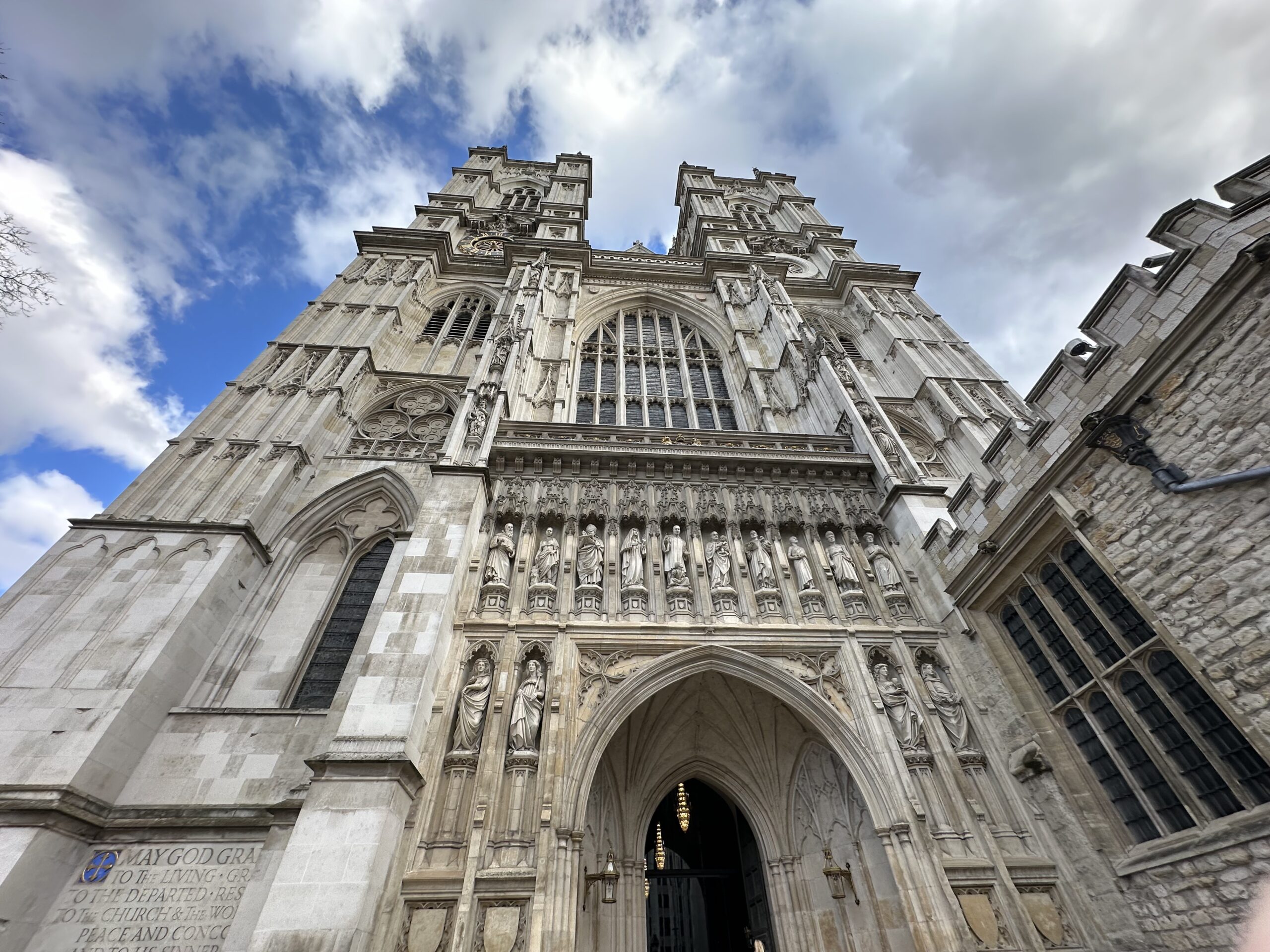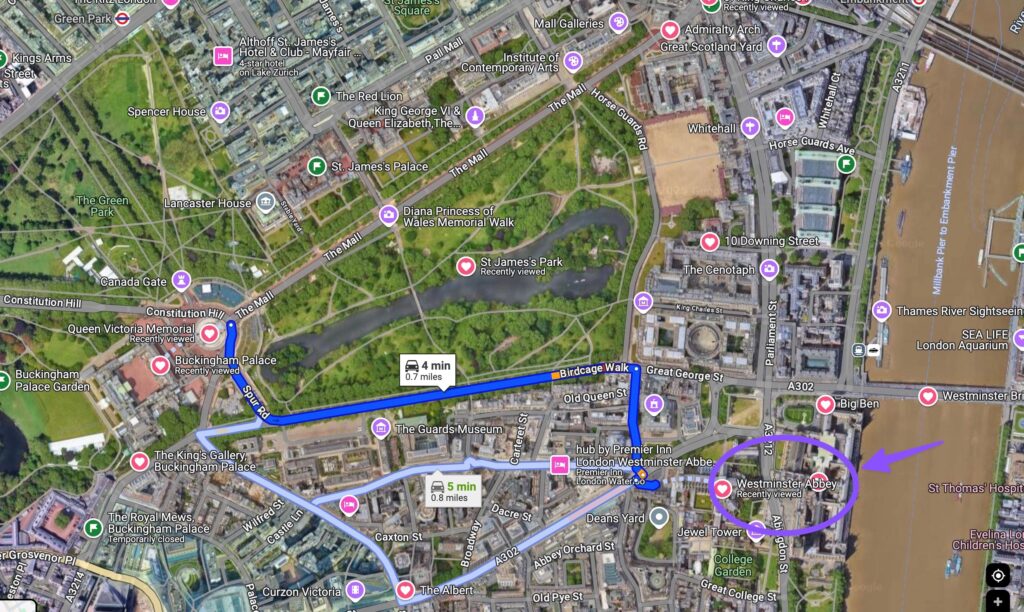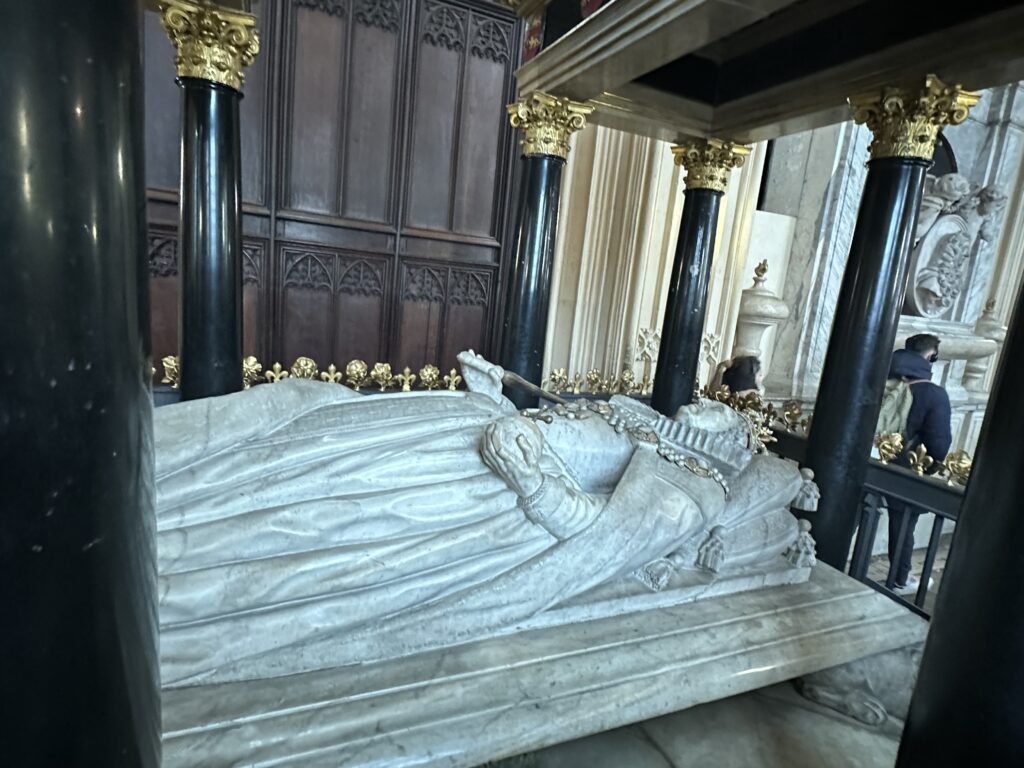Exploring Westminster Abbey

When I was preparing for my trip to Europe last year, I faced countless decisions. I had carefully planned this bucket-list adventure and knew exactly which places I wanted to visit. However, having never been there before, I found it challenging to estimate how much time I would need at each location. I watched YouTube videos from other travelers who had made similar sojourns, but I couldn’t find real, detailed insights from firsthand experiences. That’s why I decided to create this travel series—to highlight the places we visited and provide extra guidance that might help others making the same decisions. So here’s my honest assessment.
This first post is all about one of London’s most iconic and historic landmarks—Westminster Abbey. To start you off on the right foot, here are some strategies that may be helpful when visiting.
Where is Westminster Abbey & What’s Close By
On the day of our visit, we had two main attractions on the itinerary: Westminster Abbey and the Holbein Exhibit at The Queen’s Gallery in Buckingham Palace (not to be confused with the Queen’s Diamond Jubilee Galleries at Westminster Abbey). Since both were close to each other, we structured our day accordingly. After exploring the Abbey, we walked to Buckingham Palace for the exhibit, took a leisurely stroll down The Mall, and later stopped for a bite to eat—along with a pint or two—at The Sherlock Holmes Pub. It was our first full day in England, and it was certainly a packed one!

Westminster Abbey is located in the borough of Westminster, Greater London. Many historically significant sites are nearby, including Buckingham Palace, St. James’s Park (just over half a mile away), and Big Ben (a ten-minute walk). The area is well-connected by tube stations, taxis, and pedestrian-friendly streets, making it easy to explore additional landmarks if time allows. Restaurants and pubs are also within walking distance, making it convenient to combine your visit with other activities.
Allow Yourself Plenty of Time
If you have more than just a passing curiosity about Westminster Abbey, I highly recommend researching the interments ahead of time. Take note of which tombs and memorials you find most significant, as the Abbey has been the burial site for 18 English & Scottish monarchs and over 3,300 individuals—there’s a lot to take in!
If you only plan a brief walk-through or are short on time, I’d suggest allowing at least two hours for your visit. However, if you’re an English history enthusiast or an Anglophile, you’ll definitely want to set aside more time. I spent about five hours there, including lunch at the Cellarium Café, but I easily could have stayed for the full duration the Abbey was open—about two additional hours.
After my visit, I realized I had missed several notable interments I wish I had known about in advance. For instance, the Princes in the Tower were in the same section of the Lady Chapel as Elizabeth I’s tomb, yet I completely overlooked them! In a cruel twist, I can actually see them in the background of my photos of Elizabeth’s tomb—if only I had known to look!
Ticketing & Timed Entry
- I purchased our tickets for general entry and for The Queen’s Gallery in advance online, but tickets can also be bought at the door. However, if you choose to wait and purchase your ticket in person, be aware that the Abbey may reach capacity, and tickets could sell out. While I can’t speak to how often this happens, it’s worth considering.
- Online booking requires selecting a time for both the Abbey and the Queen’s Gallery. I chose the earliest possible Abbey entry at 9:30 AM, but I couldn’t find definitive information on whether I needed to account for time in the Abbey before visiting The Queen’s Gallery, which had its first available time slot at 10:30 AM.
- Upon arrival, I asked staff if this would be an issue, and they assured me it wouldn’t be. To be safe, we spent the first hour exploring the Abbey, then visited the Queen’s Gallery at our designated time before resuming our Abbey tour.
- Guidebooks are available for purchase online when you purchase your ticket, at the entrance, or in the gift shop.
Accessibility
- The Abbey is wheelchair accessible.
- In The Queen’s Gallery, visitors have the option to take a quite high flights of stairs to the upper attic or use an elevator, making it accessible for those with mobility needs.
- Seating areas are available in the Nave and along some walls, but expect to be on your feet for an extended period.
What to Expect Inside the Abbey
When you first arrive at Westminster Abbey, you’ll enter through the North entrance. Upon entering, you’ll receive an audio guide that provides historical context as you explore. While I found it slightly cumbersome—it hangs around your neck and is a bit heavy—I highly recommend using it, as it provides the best order for touring the Abbey. Researching notable burials and tombs in advance will help you navigate efficiently and ensure you see everything that interests you.
A few things to note:
- The Abbey can get warm inside—there are no coat or bag check services, so dress accordingly.
- While some visitors take videos inside, I opted to respect the Abbey’s guidelines, capturing mostly photographs. On the day of our visit there were many staff members throughout the Abbey and they were looking closely for visitors that were recording, and speaking to them.

Key Areas & Tombs of Historical Figures
- The Nave & Choir – Stunning stained glass windows, Gothic ceilings, and historical memorials.
- The Coronation Chair – Used in every British coronation since 1308.
- Tombs of Notable Figures:
- Elizabeth I & Mary I – Rivals in life, resting together in death.
- Anne of Cleves – Henry VIII’s fourth wife.
- Sir Isaac Newton & Charles Darwin – Pioneers of science.
- Mary, Queen of Scots – Moved to Westminster by her son, James I.
- King Henry V – The victor of Agincourt.
- Jane Austen, Charles Dickens, and many literary greats.

The Queen’s Gallery & The Cellarium Café
One hidden gem I highly recommend is The Queen’s Gallery, where you’ll find rare artifacts, funeral effigies, and historical treasures. Seeing Henry VII’s effigy head, made from his death mask, was a surreal moment for me—a lifetime of Tudor fascination culminating in one gaze.
After exploring, we stopped for lunch at the Cellarium Café, housed in the Abbey’s old monastic cellars. While vegetarian options were somewhat limited, we found several good choices and enjoyed a much-needed break before starting the second half of our day. The Cafe did have wine, hard seltzer, and other alcohol options, as well as soft drinks. I would definitely say that the cafe is family friendly.
Final Thoughts
Visiting Westminster Abbey was an emotional and awe-inspiring experience. Standing in front of the tombs of historical figures I’ve read about since childhood was surreal. If you’re in London, this is an absolute must-see.
Here’s the link to the story of Henry V’s facial injury and surgery that I referenced in my YouTube video. Be sure to check it out, because it’s a fascinating story.
This is just the first in my travel series—next up, exploring the Tower of London! Be sure to subscribe to The Everyday Sage on YouTube for more of my video travel series that will go hand-in-hand with each of the blog posts.
Have you visited Westminster Abbey? What was your favorite part? Let me know in the comments!
